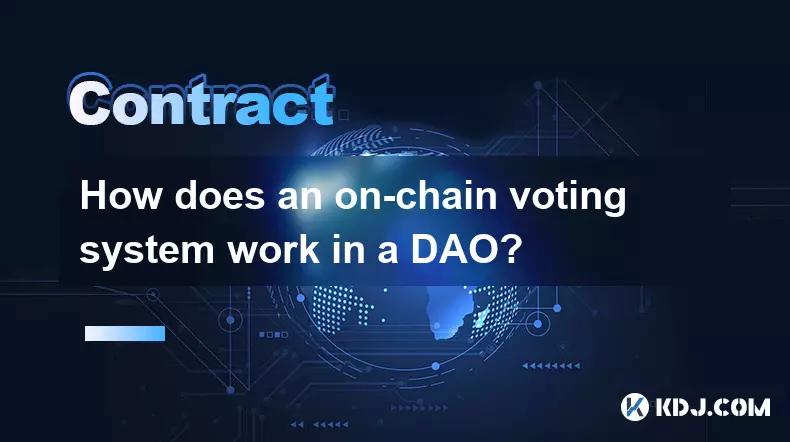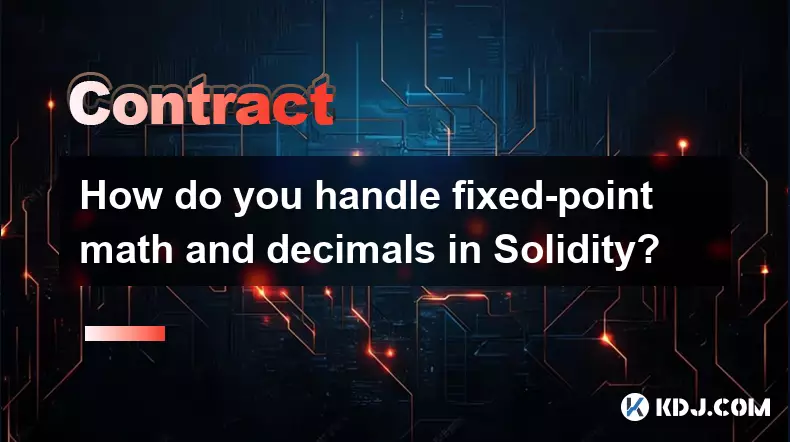-
 bitcoin
bitcoin $101752.865364 USD
-1.09% -
 ethereum
ethereum $3382.985899 USD
-1.38% -
 tether
tether $0.999658 USD
0.04% -
 xrp
xrp $2.272505 USD
-1.51% -
 bnb
bnb $989.089004 USD
0.14% -
 solana
solana $156.962612 USD
-3.08% -
 usd-coin
usd-coin $0.999776 USD
0.01% -
 tron
tron $0.290786 USD
-0.69% -
 dogecoin
dogecoin $0.174594 USD
-2.86% -
 cardano
cardano $0.560085 USD
-3.55% -
 hyperliquid
hyperliquid $40.023704 USD
-5.75% -
 chainlink
chainlink $15.324649 USD
-2.78% -
 bitcoin-cash
bitcoin-cash $493.576540 USD
-3.52% -
 zcash
zcash $571.320038 USD
-12.05% -
 stellar
stellar $0.280066 USD
-4.26%
What is a state machine and how can a contract be designed as one?
State machines in blockchain ensure secure, predictable smart contract behavior by enforcing valid state transitions and preventing unauthorized or invalid actions.
Nov 08, 2025 at 02:19 pm

Understanding State Machines in Blockchain Context
1. A state machine is a computational model used to design systems that transition between defined states based on inputs and predefined rules. In the context of blockchain and smart contracts, this concept ensures predictability and security by restricting operations to valid transitions.
2. Each state represents a specific condition of the contract, such as 'initialized,' 'funded,' 'active,' or 'completed.' Transitions occur only when certain conditions are met, enforced through conditional logic within the code.
3. The integrity of the system relies on ensuring that no invalid state can be reached. This eliminates ambiguous behaviors and reduces vulnerabilities like reentrancy or unauthorized access.
4. By modeling contracts as finite state machines (FSMs), developers enforce structured execution paths. Every function call evaluates the current state and determines whether the requested action is permissible.
5. This pattern enhances auditability. External observers can verify the contract’s behavior at each stage without needing to trace complex control flows or mutable data structures.
Designing Smart Contracts as State Machines
1. Begin by identifying all possible states the contract may enter during its lifecycle. For example, in a crowdfunding contract, states might include “Setup,” “FundingPeriod,” “Successful,” “Failed,” and “Refunding.”
2. Define clear transition rules between these states using modifiers or internal checks. A function that allows contributions should only execute if the contract is in the “FundingPeriod” state.
3. Use an enum to represent the states in Solidity or equivalent constructs in other languages. This improves readability and prevents arbitrary state assignments.
4. Implement state changes explicitly within functions, ensuring that every state mutation is intentional and logged via events. This supports transparency and off-chain monitoring.
5. Restrict state transitions to authorized roles where necessary. For instance, only an admin may move a contract from “Paused” to “Active,” but contributors can trigger a shift from “FundingPeriod” to “Successful” upon meeting goals.
Benefits of State Machine-Based Contracts
1. Improved security through constrained logic flow limits the attack surface. Attackers cannot exploit paths that do not exist in the state diagram.
2. Easier formal verification becomes feasible because the number of reachable states is finite and well-documented, enabling tools to prove correctness properties.
3. Debugging and testing become more efficient. Developers can write test cases for each transition rather than accounting for every possible function sequence.
4. User interactions gain clarity. Frontend applications can display appropriate UI elements based on the current state, improving user experience.
5. Upgradability considerations are simplified. If a new version introduces additional states, migration paths can be designed with full awareness of existing constraints.
Frequently Asked Questions
What happens if a contract receives a message meant for a different state?The transaction will revert unless there is explicit handling for out-of-state calls. Properly designed contracts use require statements or modifiers to block actions incompatible with the current state.
Can a state machine contract have parallel states?While traditional FSMs are sequential, some designs incorporate orthogonal regions or composite states. However, in most blockchain implementations, simplicity favors linear or tree-like state progression to avoid complexity-related bugs.
How are state transitions recorded on-chain?Developers emit events when changing states. These logs are stored in transaction receipts and can be queried by external services to track the contract's history without accessing storage directly.
Is it possible to revert to a previous state?Only if the state machine design explicitly allows backward transitions. Most production contracts avoid reversible states to prevent manipulation, especially in financial or voting contexts.
Disclaimer:info@kdj.com
The information provided is not trading advice. kdj.com does not assume any responsibility for any investments made based on the information provided in this article. Cryptocurrencies are highly volatile and it is highly recommended that you invest with caution after thorough research!
If you believe that the content used on this website infringes your copyright, please contact us immediately (info@kdj.com) and we will delete it promptly.
- Ripple (XRP) in 2026: Hold or Fold? A Look at XRP's Future and Emerging DeFi Alternatives
- 2025-11-08 18:35:01
- Zcash ZEC Coin Price Explosion: From Privacy Niche to Center Stage
- 2025-11-08 18:55:01
- Berachain Price Prediction: Navigating the Honeycomb Hype in Crypto
- 2025-11-08 18:55:01
- Arthur Hayes, Gold, and Bitcoin: A Modern Monetary Trinity?
- 2025-11-08 19:15:01
- Shiba Inu's Next Move: Navigating a Shifting Market
- 2025-11-08 19:20:01
- Pakistan's Crypto Crossroads: Balancing Opportunity with Asset-Backed Realities
- 2025-11-08 19:20:01
Related knowledge

How do you safely send Ether to another contract?
Nov 09,2025 at 06:40pm
Sending Ether to Smart Contracts: Key Considerations1. Verify that the receiving contract has a payable fallback function or a designated payable func...

What is a state machine and how can a contract be designed as one?
Nov 08,2025 at 02:19pm
Understanding State Machines in Blockchain Context1. A state machine is a computational model used to design systems that transition between defined s...

How does a bonding curve work and how is it used for token sales?
Nov 09,2025 at 04:00pm
Understanding the Mechanics of Bonding Curves1. A bonding curve is a mathematical function that links the price of a token to its supply. As more toke...

How do you upgrade a smart contract using the UUPS proxy pattern?
Nov 09,2025 at 01:19am
Understanding the UUPS Proxy Pattern in Smart Contract DevelopmentThe UUPS (Universal Upgradeable Proxy Standard) pattern has become a cornerstone in ...

How does an on-chain voting system work in a DAO?
Nov 09,2025 at 04:20pm
Understanding On-Chain Voting in DAOs1. An on-chain voting system operates directly on a blockchain network, allowing token holders to cast votes that...

How do you handle fixed-point math and decimals in Solidity?
Nov 08,2025 at 11:40pm
Understanding Fixed-Point Arithmetic in Solidity1. Solidity does not natively support floating-point numbers, which means developers must rely on fixe...

How do you safely send Ether to another contract?
Nov 09,2025 at 06:40pm
Sending Ether to Smart Contracts: Key Considerations1. Verify that the receiving contract has a payable fallback function or a designated payable func...

What is a state machine and how can a contract be designed as one?
Nov 08,2025 at 02:19pm
Understanding State Machines in Blockchain Context1. A state machine is a computational model used to design systems that transition between defined s...

How does a bonding curve work and how is it used for token sales?
Nov 09,2025 at 04:00pm
Understanding the Mechanics of Bonding Curves1. A bonding curve is a mathematical function that links the price of a token to its supply. As more toke...

How do you upgrade a smart contract using the UUPS proxy pattern?
Nov 09,2025 at 01:19am
Understanding the UUPS Proxy Pattern in Smart Contract DevelopmentThe UUPS (Universal Upgradeable Proxy Standard) pattern has become a cornerstone in ...

How does an on-chain voting system work in a DAO?
Nov 09,2025 at 04:20pm
Understanding On-Chain Voting in DAOs1. An on-chain voting system operates directly on a blockchain network, allowing token holders to cast votes that...

How do you handle fixed-point math and decimals in Solidity?
Nov 08,2025 at 11:40pm
Understanding Fixed-Point Arithmetic in Solidity1. Solidity does not natively support floating-point numbers, which means developers must rely on fixe...
See all articles





















![The Graph Price Prediction [GRT Crypto Price News Today] The Graph Price Prediction [GRT Crypto Price News Today]](/uploads/2025/11/07/cryptocurrencies-news/videos/690d4df44fe69_image_500_375.webp)




















































